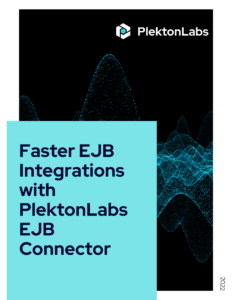Legacy systems are operational software that was designed and used for various business and tech-related landscape solutions. Notice how we mentioned “designed” and “used”. The reason is that legacy systems are considered to be outdated processes that are however still used in various organizational process management. And that is not good news for business operations.
With time, business and organizations have not only diversified their operations but with gradual technological innovations, most of these operations have been digitized. Digitization has paved the way for better communication, process management, and customer service. But the systems that drive these processes have unfortunately remained the same as its early days. And that is where the modern drawback lies. With organizations developing newer and innovative means of customer support and service, the framework that binds these digital offerings are not capable enough to drive these rising demands.
What it means is that even though organizations and businesses have developed various means to increase service efficiency, they are unable to integrate these services due to lack of system landscape support or omnichannel support.
Besides, legacy systems pose several threats that can affect a business in several ways. Some of them being –
- Decreased sales revenue
- Lower customer retention
- Lack of employee productivity
- Brand image loss
- Low employee turnover rate.
So one might wonder what’s the point of using a legacy system? Why not replace it with a modern system? The issue being, lack of a competent workforce and the cost of system replacement. It’s easier to manage and maintain legacy systems since a skilled workforce is available for these specific systems. Also, a system-wide replacement would mean replacement for every sector or functional head of the business. Whereas in reality, it is most necessary in the sales and service section of the enterprise. So businesses are often left to function at a decreased efficiency. However, there are a number of legacy modernization methods that organizations and businesses can apply in order to reap the full benefit of digitized customer service.
Encapsulation
In a legacy system, an application is designed in such a way that it holds a specific functionality. This, however, limits the ability of an application to carry out multiple functions or processes, thus limiting the efficiency of the system. This limitation can be bypassed by the encapsulation process. We know the system processes are controlled by data and functions. The data and functions are encapsulated within the existing system in the form of an application. This application is then applied via an external API. The API works as the main driver of the application but the entire process is controlled by the legacy system itself.
In this process, a single application within a system can be used for multiple processes without hindering the mainframe process. Mulesoft specifically designs API for legacy compatibility. The APIs are designed for multiple scenarios and diverse application ranges to ensure the maximum usage of each application process.
Re-hosting
As we mentioned earlier, each legacy system consists of several applications and the number of processes within these applications is limited. Encapsulation can be a good work-around to the process shortage, however, re-hosting can be a more direct and easy way to bypass the scenario. Re-hosting is a simple cloud infrastructure based API system that uses an exact copy of a legacy system application and assigns processes as per requirement. The advantage here is that an optimized cloud infrastructure can deliver an equivalent output as a physical system and thus helps to overcome the need for entire system replacement.
Re-platform
Another useful technique is re-platforming. Questions may arise as to why move to a new platform if the entire ordeal is to modernize an existing legacy system? The answer here is that re-platform doesn’t mean an entire overhaul of the system, rather it is an effective means to shift some of the existing processes to a new platform and redesign the architecture. This would mean that an existing application can be reprogrammed to carry out specific functions without having to overhaul the entire platform.
Rebuild
This is a more complicated and detailed method compared to the ones mentioned above. In this method, the primary codes are rewritten to set a new process and function within an application. But the scope and specification of the application are left intact. This method is somewhat less productive considering other methods use various cloning or relocation mechanisms to introduce efficiency to the system. This method reprograms and restructures an existing application to suit its needs. That is the total end efficiency is neither increased or decreased, rather the process gets repurposed to apply newer mechanisms. A business can choose any of the above-mentioned methods to modernize its existing legacy systems. Regardless of the systems, Mulesoft and its integrated API systems can help increase the efficiency of the legacy systems. As we move further into a digitized world, the scope of better customer service gets wider day by day. Though legacy systems shouldn’t be completely written off as of right now, a modernization technique must be adopted to drive the business output.
Plekton Labs is a MuleSoft consulting company helps enterprises in their digital transformation of their legacy systems to achieve operational excellence. Establishing enterprise integration layer and utilizing API-led connectivity model save lot of money by avoiding duplication and redundancy.




